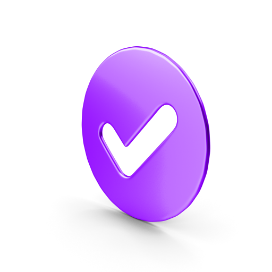Regardless of whether you’re buying your first home, planning a home upgrade or looking to refinance a home loan in Queensland, you’ve probably asked yourself: “Should I choose a fixed or variable interest rate?” This question deserves serious consideration. Your final choice will influence how much interest you’ll end up paying, what kind of flexibility your home loan will have and, ultimately, just how suitable your home loan is for your specific financial situation.
But what’s the real difference between a fixed and a variable home loan? Which will offer the greatest flexibility? And which option is offering the best value to home buyers and those looking to refinance their home loan in Queensland in 2021?
What Is a Fixed Rate Home Loan?
As the name suggests, a fixed rate home loan has a predetermined interest rate that will remain unchanged for a set period of time. Most fixed rate home loans will offer a fixed term of between 1 and 5 years, after which your home loan will automatically revert to the lender’s standard variable interest rate.
What Are the Benefits of a Fixed Rate Home Loan?
One of the best things about a fixed rate home loan is that borrowers don’t have to worry about rate increases. What causes a rate increase? The most common cause is adjustments to the official cash rate. Every month the Reserve Bank of Australia (RBA) meets to decide whether or not the official cash rate should be adjusted (either up or down). When the cash rate goes up, most lenders will quickly follow with rate increases of their own. But those on a fixed interest rate won’t be affected. The other main advantage of a fixed rate home loan is that it allows borrowers to easily manage their budget and monthly cash flow. There’s no need to worry about your minimum monthly repayments changing for the duration of your fixed term period.
What Are the Drawbacks of a Fixed Rate Home Loan?
The main drawback to a fixed rate home loan is its lack of flexibility. Many fixed rate loan products will have limits on a borrower’s ability to make additional repayments (so if you’re planning to pay more than the minimum, then this may not be the best option). A fixed rate mortgage may also come with fewer additional features (such as a redraw facility or offset account) and will often include a “break fee” that will be charged to borrowers who decide to refinance before the end of the fixed term. And while you won’t have to worry about a rate hike, you also won’t benefit from any rate reductions while your home loan has a fixed interest rate.
What Is a Variable Interest Rate Home Loan?
A variable interest rate home loan is a product where the interest rate can be continually adjusted (either up or down) by the lender. While the main cause of rate fluctuations is changes announced by the RBA, lenders may also increase or decrease their variable interest rates in response to market changes, increased competition between lenders or as a way to attract more customers.
What Are the Benefits of a Variable Interest Rate Home Loan?
The great thing about a variable interest rate home loan is the flexibility – they typically come with a range of home loan features and often allow you to make additional repayments. The flexibility of a variable interest rate loan also makes them easier to refinance, allowing you to switch and save if a better deal becomes available from another lender. Additionally, borrowers with a variable interest rate will usually see reductions in their minimum monthly repayments in response to rate cuts by the RBA.
What Are the Drawbacks of a Variable Interest Rate Home Loan?
When the economy started to nosedive thanks to COVID, the RBA responded with multiple cuts to the cash rate. And while they’ve promised to hold off on increases for the foreseeable future, sooner or later, the cash rate is likely to go up again. When this happens, variable interest rates will go up too (while fixed interest home loan borrowers will have locked in a low rate). This is why borrowers with variable interest rates need to include a “buffer” in their budget that would allow for them to still meet their minimum monthly repayments in the face of multiple rate increases.
Is It Possible to Have the Best of Both Worlds?
If you’re after the certainty of a fixed rate home loan and the flexibility that comes with a variable interest rate, then talk to a mortgage broker in Queensland about splitting your home loan. With a split home loan, you can nominate a set percentage to have a fixed interest rate, while the remaining portion will have a variable interest rate. This can provide you with a home loan that incorporates the best of both worlds (both fixed and variable).
With the above in mind, which option offers the best value to home buyers and those looking to refinance their home loan in 2021? The reality is, fixed, variable and split home loans come with their own unique lists of pros and cons. So, before you decide which option is right for you, it’s well worth talking to an experienced mortgage broker in Queensland. A broker can assess your current financial position, consider your future finance goals and then provide a recommendation tailored to your specific situation. To find out more about what fixed and variable interest rate products are currently available (and which one is right for you), contact the team at Borro™ on Ph: 1300 1 BORRO™.

